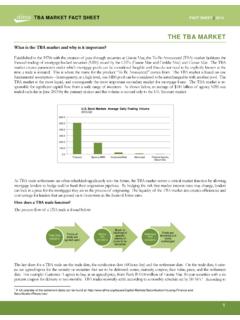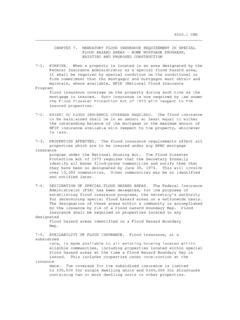Transcription of The Science of Gratitude - John Templeton Foundation
1 Executive Summary 1 The Science of Gratitude White paper prepared for the John Templeton Foundation by the Greater Good Science Center at UC Berkeley Executive Summary Throughout history and around the world, religious leaders and philosophers have extolled the virtue of Gratitude . Some have even described Gratitude as social glue that fortifies relationships between friends, family, and romantic partners and serves as the backbone of human society. But what exactly is Gratitude ? Where does it come from? Why do some people seem to be naturally more grateful than others?
2 And are there ways we can foster more feelings and expressions of Gratitude ? Thanks in large part to funding from the John Templeton Foundation , over the past two decades scientists have made great strides toward understanding the biological roots of Gratitude , the various benefits that accompany Gratitude , and the ways that people can cultivate feelings of Gratitude in their day-to-day lives. The studies comprising this Science of Gratitude are the subject of this paper. The paper pays special attention to research funded by the John Templeton Foundation , which has been fundamental to the growth, and in some ways the very formation, of this area of research.
3 What is Gratitude ? Most people have an instinctive understanding of what Gratitude is, but it can be surprisingly difficult to define. Is it an emotion? A virtue? A behavior? Indeed, Gratitude can mean different things to different people in different contexts. However, researchers have developed some frameworks for conceptualizing Gratitude so that it can be studied scientifically. For example, Robert Emmons and Michael McCullough define Gratitude as a two-step process: 1) recognizing that one has obtained a positive outcome and 2) recognizing that there is an external source for this positive outcome.
4 While most of these positive benefits come from other people hence Gratitude s reputation as an other-oriented emotion people can also experience Gratitude toward God, fate, nature, etc. Some psychologists further categorize three types of Gratitude : Gratitude as an affective trait (one s overall tendency to have a grateful disposition), a mood (daily fluctuations in overall Gratitude ), and an emotion (a more temporary feeling of Gratitude that one may feel Executive Summary 2 after receiving a gift or a favor from someone).
5 Most of the studies in this paper focus on trait (or dispositional Gratitude ) and/or Gratitude as an emotion. The origins of Gratitude Research suggests that Gratitude is not simply a cultural construct. It has deep roots that are embedded in our evolutionary history, our brains and DNA, and in child development. Animals as diverse as fish, birds, and vampire bats engage in reciprocal altruism activities behaviors that one animal performs to help another member of their species, even at a cost to themselves, presumably because they recognize at some instinctual level that the other individual may repay the favor at a later date.
6 Many scientists see this desire to repay generosity as an expression of Gratitude . In fact, some scientists suggest that Gratitude may have evolved as a mechanism to drive this reciprocal altruism, thereby turning strangers into friends and allies who are more likely to help one another. Support for the idea that Gratitude may have arisen as an evolutionary adaptation comes in part from research on primates. Studies have found that chimpanzees are more likely to share food with a chimpanzee that had groomed them earlier in the day and are more likely to help another chimpanzee with a task if that chimpanzee had helped them in the past.
7 Studies from neuroscience have identified brain areas that are likely involved in experiencing and expressing Gratitude , providing further evidence for the idea that Gratitude is an intrinsic component of the human experience. Additionally, a few studies have identified specific genes that may underlie our ability to experience Gratitude . Recent studies have also begun exploring the developmental roots of Gratitude . This work suggests that even fairly young children have some concept of Gratitude that develops as they mature.
8 Again, this suggests that the roots of Gratitude run deep. Individual factors linked to Gratitude Even if humans as a species have a general propensity for Gratitude , what determines whether an individual feels grateful or not? Research has linked a variety of factors including personality factors, cognitive factors, and gender to one s likelihood of experiencing Gratitude or having a grateful disposition. Several studies have explored whether certain personality factors such as extraversion, agreeableness, conscientiousness, neuroticism, or openness to experience are associated with dispositional Gratitude ; their results have differed.
9 Other studies have found evidence suggesting that Gratitude may be conceptualized as its own personality factor. There are a number of cognitive factors that can influence how much Gratitude a person feels in a certain situation. These include the perceived intentions of the benefactor ( , whether the benefactor was seen as acting out of pure altruism or due to selfish motives, such as wishing to improve their reputation), the apparent cost to the benefactor, the Executive Summary 3 perceived value of the gift/favor to the recipient, whether the gift/favor was provided by choice versus obligation, and the extent to which the receiver believes in free will.
10 Several studies have found that girls and women report feeling more grateful than boys and men, possibly because boys and men at least in the United States may be more likely to associate Gratitude with weakness or indebtedness. Other studies have identified certain traits that act as barriers to Gratitude . These include envy, materialism, narcissism, and cynicism. Social and cultural factors linked to Gratitude Research also suggests that social factors including religion, cultural influences, and parenting styles may influence a person s tendency to experience Gratitude .






